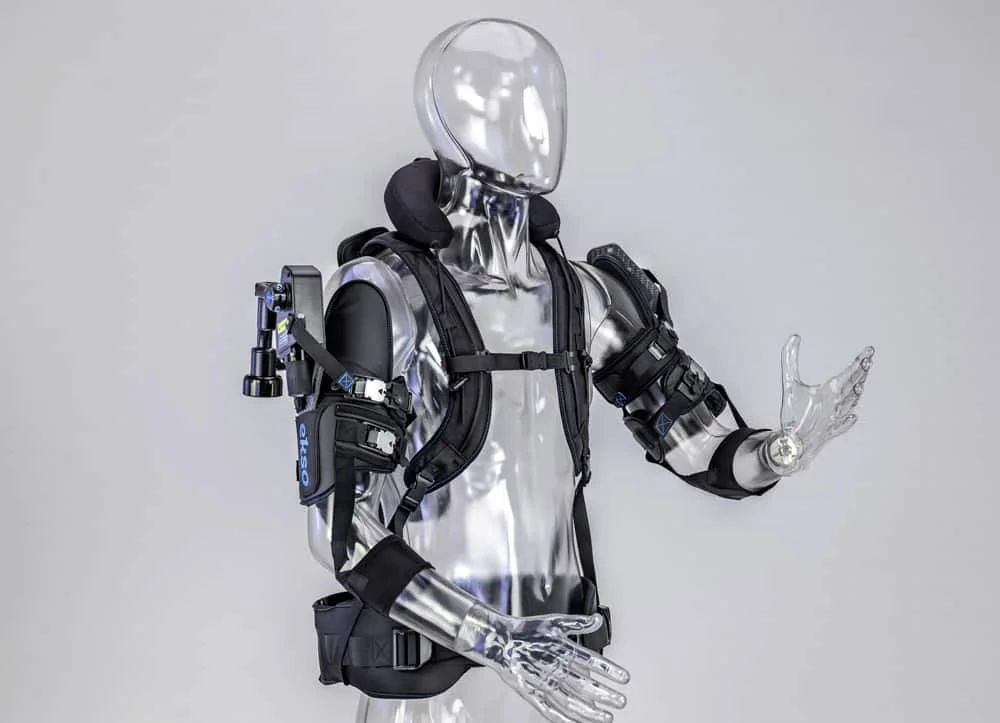Exploring Human-Robot Interfaces: End-Effectors and Exoskeletons
In the ever-evolving landscape of rehabilitation technology, two terms that often surface are "end-effectors" and "exoskeletons." Looking to keep up with current trends in Occupational and Physical Therapy? Read on to see how each of these options provides ample benefits for its patients!
End-Effectors: A Game-Changer in Rehabilitation
First up is end-effectors. Here, a robotic system operates at the very end of a patient's limb, providing a more natural experience for patients using the machine. They can often move on their own ability far better than an exoskeletal device, and use more comfortable kinematics. Here are a few benefits of end-effectors when compared to exoskeletal devices and typical manual techniques
Swift Set-Up, More Patient Time: The beauty of end effectors lies in their rapid setup time, allowing therapists to focus more on the patient and less on configuring complex machinery. In a matter of minutes, the system is ready to go, ensuring that valuable session time is spent where it matters most.
Enhanced Mobility and Stability: Contrary to what some may think, end effectors actually enhance stability and provide a secure and reliable experience. With their low torque and backdrivability, end effectors like Burt offer a stable platform while allowing for improved range of motion testing and enhanced support for mobile arms.
User-Friendly Interaction: Gone are the days of leaning over tables to support a patient's arm. End effectors provide a visually and tactically less intrusive experience, making the rehabilitation process smoother and more comfortable for the individual.
Safety First: In the unfortunate event of a seizure, end effectors like Burt protect patients with their easy-to-exit system, facilitated by two simple straps. In an exoskeletal device, seizures might result in patients scraping arms or legs on metal devices or components, which is especially dangerous considering aged patients' weaker skin. This emphasis on safety ensures a worry-free rehabilitation environment.
A Human Touch: The transition from machine to a more human-centric experience is seamless with end effectors. Patients find joy and control in the interactive and fun aspects of rehabilitation, turning the process into a positive and empowering journey. The intuitive interface of the end effector allows patients to easily understand and control the device, leading to a greater sense of independence and motivation in their rehabilitation journey.
Here's an example of an end effector robot -- this one is Barrett's Burt. The patient is acted upon solely at the end of their arm (or leg in another case).
This is an example of an exoskeleton robot: here, the robotic apparatus wraps around the users body, providing contact at many points and support throughout.
Exoskeletons: Impressive Yet Limiting
On the flip side, exoskeletons, like the ones produced by Hocoma, present a different set of challenges and considerations. Between limited range of motion and a complicated set-up process, these devices can pose challenges to therapists and patients. Here are a few things to consider when choosing a new exoskeletal robot:
Planes of Motion
Set-Up Time
Restriction of Patient Visibility
Learning Curve
One of the most influential concepts here is the planes of motion. When rehabilitating a patient, it's important to consider their goals and their current abilities in terms of their movement within the planes of the body. When selecting a robot on which to conduct rehabilitation, be sure to select one that lets the patient experience all three main planes of the body: the frontal, transverse, parasagittal planes.
Another to consider is the time of set-up and use: If patients spend half of their session entering the machine, they'll be unable to effectively make use of their paid session. Also, considering most therapists book their sessions in 15 minute increments, a 10 minute set up time takes up a significant portion of the session. Instead, look for robots that require minimal set up times under 3 minutes. The Burt is an excellent example of this, with only a 1 minute set up time -- its end-effector approach allows for this.
Striking the Right Balance can be difficult. In the world of Robotic Occupational Therapy, both end effectors and exoskeletons have their place. While end effectors offer a more flexible, patient-centered approach with a focus on comfort and natural movement, exoskeletons impress with their technical prowess. As we move forward, striking the right balance and understanding the unique needs of each patient will be key to unlocking the full potential of these innovative technologies. Give us a comment below: which robots have you used in the past, and what works better for you?


